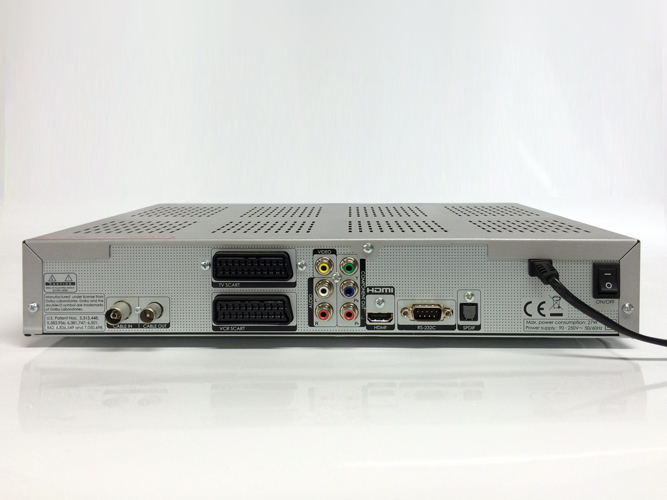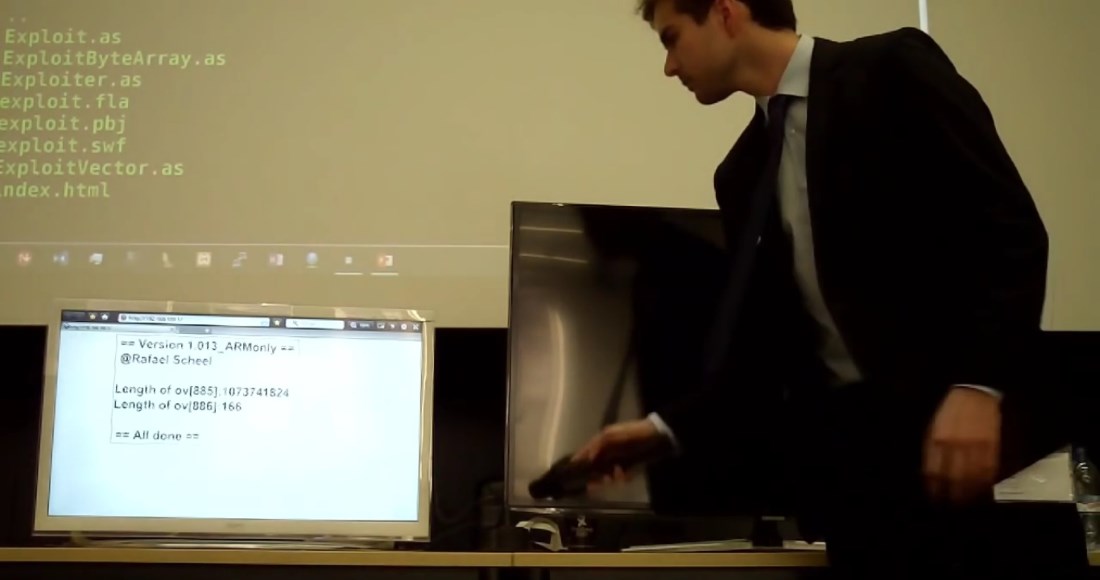Download Unitymedia Dvb-c Hack
Software activation codes. BSNL all USSD codes to check balance, offer, plan, alert. BSNL i.e Bharat Sanchar Nigam Limited is an Indian telecom state owned company, headquartered in. Bsnl ussd codes are best way to bsnl balance check. [BSNL USSD Codes List] Check Any Bsnl Service by [BSNL Codes]. BSNL USSD code for Kollywood activation.
Themen von A bis Z.
No notes for slide. Video from Die Hard 4.0. Television is a one- way medium unlike Internet. So if someone hack into your TV provider and stream in a Video stating than a riot has started in the nearby village/city, that can cause enough panic. We will explain both analog and digital cable networks. We will see technologies behind these networks and show how to hack into them.
Pay-TV smartcard hacking – how easy is it? What’s there unless we hack into the. Peer-to-peer file-sharing protocol BitTorrent and download any program. I know there is one person hacking with MN88472 Linux driver and it is not me! What I quickly tested (against generated code from the sniffs) I was able to view DVB-T2 without any changes to R828D tuner driver. For DVB-C it seems like some changes are needed also for tuner driver. But biggest part is of.
I am not even from the signals world, am just an application security guy. But I find it bad not knowing how my TV works and calling myself a Hacker.

FM Modulation And Broadcasting TV Station Antenna Farm Cable Operator End IRD-Integrated Receiver Decoders. Local cable network.
TV. Multiple antennas are necessary for cable operators to capture individual channel signals from multiple satellites. These signals are decoded using an IRD decoder units Integrated Decoder. The decoded signal are modulated. The modulators are connected together to sent the entire collected channels to a QAM. To distribute signals optic fiber cables are used. At a local cable distributor end the optic cable is replaced with co-axial cable.
Amplifiers were introduced in each nodes to keep signals strong. The head end receives the radio signal and uses the IRD to tune and amplify the signal. Once the signal is amplified, the IRD decodes the signal.
IRD Convert the RF signals to Analog signals. Here each channel is frequency modulated by the modulator. So HBO would be in a particular frequency and National channel would be in another. IRD provider by the channel companies. QAM stands for quadrature amplitude modulation, the format by which digital cable channels are encoded and transmitted via cable television providers.
Quadrature amplitude modulation (QAM) is both an analog and a digital modulation schem It conveys two analog message signals, or two digital bit streams, by changing (modulating) the amplitudes of two carrier waves, using the amplitude-shift keying (ASK) digital modulation scheme or amplitude modulation (AM) analog modulation scheme. The modulated waves are summed, and the resulting waveform is a combination of both phase-shift keying (PSK) and amplitude-shift keying (ASK) The signals are amplified and distributed via optic fiber. Each channel received would be under a particular frequency.
The cable operator can modulate it to a different frequency if they want and sent it on wire from head end. Certain national channels need to go in the same frequency they came in. Now with FDMA all the many different channels are sent to the users via a fiber cable. The transmission medium is Radio over Fiber.
TV channels tunes in individual frequency and decodes them to audio and video. Multiple antennas are necessary for cable operators to capture individual channel signals from multiple satellites. These signals are decoded using an IRD decoder units Integrated Decoder. The decoded signal are modulated. The modulators are connected together to sent the entire collected channels to a QAM.
To distribute signals optic fiber cables are used. At a local cable distributor end the optic cable is replaced with co-axial cable. Amplifiers were introduced in each nodes to keep signals strong. Analog network vulnerable to MITM since no Encryption. If you have physical access to these networks then you can easily have free cable connection. Or you can even Broadcast your own signals. The following cheap devices were enough to perform a MITM on Analog networks.
RF modulator: An RF modulator, takes an input signal and outputs a radio frequency-modulated signal. Amplifier: Boost the output signal.
Signal Cutter: Chop down a specified frequency. Signal Tap: Can inject signal into the existing signals. Optical Receiver:Reads optical inputs. Optical to Coaxial: Converts Optical input to Coaxial output. Total: 3000 RS.
When doing man in the middle you need to avoid collision. It could be done by fully shutting down the original signal source. Shutting down the entire signal source will stop all the channels going offline.
Or include a signal cutter, that will chop reduce the signals so that the existing NDTV frequency is reduced to something else. Introduce our custom video in the frequency of fox news and game over. Nafeez.
there are many dvb standards, each developed for its own intended use. The first of the dvb standards to be agreed upon by etsi and others was the dvb-s standard (1994) for satellite transmission. Dvb-t is used for ter- restrial transmissions, and was commercialized around 1997. Dvb-c is used in cable transmissions. DVB headend DVB-C system is the information exchange center, responsible for signals, treatment and control, complete signal input, signal processing, signal output and conditions, and programs receive management, customer management, system management, and other functions. Source: Does signal processing, Customer management.System management.
Spent 1 minute on this slide. Middleware Servers These are servers that provide the billing and customer services. Attacks on Middleware are possible in both DVB-C and IPTV networks Locating the Mother Program: Some network fingerprinting will provide details of the Web Application used to manage the IPTV service. Sometimes few of these controllers are accessible on the Internet.
The cable TV local operators control panel can do stuff like shutting down access, send messages to individual clients etc by specifying the client’s UAKEY. They have a super secret JS file, which gets dynamically loaded for a given admin. Spent 1 minute on this slide. Tips: Before writing a fuzzer always check other mpeg parsing applications source code. We waited for the stb to crash and restart.
So mostly stared at the TV. Finding a Bug in a media parser is to easy job. cable companies deliver one dvb stream to the tv. This stream contains several channels, each on its own frequency. The channels are com- bined, or “muxed” into one transport stream and delivered to the tv, which “demuxes” the signal so it can be “read” from the various channels. In addition to the audio/video streams (the payload), there are also a number of tables included in the transport stream. These tables provide the tv with information about the stream.

An example is the Program association table, which lists all available programs in the transport stream. Source:. Sample picture shows data populated using PAT info. Program Association Table (PAT): for each service in the multiplex, the PAT indicates the location (the Packet Identifier (PID) values of the Transport Stream (TS) packets) of the corresponding Program Map Table (PMT). It also gives the location of the Network Information Table (NIT).
Ref:. A good tool to inspect DVB stream is Dvsnoop: Image: More detailed structure diagram: Each field explained:.
Pass 1: The plaintext of the payload is split into blocks of 64 bit length. The remainder that is smaller than 64 bit; all blocks except this remainder are then encrypted with a custom block cipher in CBC mode, using reverse block order and all zero initialization vector. Pass 2: In the second pass, a stream cipher using the first block (last block in the order used with the block cipher) as initialization vector encrypts all data again, except the first block. Note that DVB-CSA does not randomize the ciphertexts: Equal plaintexts are always mapped to the same ciphertexts Ref:. The DVB-C decryption keys for the scrambling algorithm are in the STB removable cards or hardcoded. There are multiple papers that document ways to effectively break DVB-CSA and recover encryption key.
Our aim is to inject our own streams into the network and make the end user STBs parse them. There is a better way doing it rather than breaking the key.
The header starts with a well-known Synchronisation Byte (8 bits). This has the bit pattern 0x47 (0100 0111). A set of three flag bits are used to indicate how the payload should be processed. Ref: The first flag indicates a transport error. The second flag indicates the start of a payload (payloadunitstartindicator) The third flag indicates transport priority bit. The flags are followed by a 13 bit Packet Identifier (PID). This is used to uniquely identify the stream to which the packet belongs (e.g.
Unitymedia
PES packets corresponding to an ES) generated by the multiplexer. The PID allows the receiver to differentiate the stream to which each received packet belongs. Some PID values are predefined and are used to indicate various streams of control information. A packet with an unknown PID, or one with a PID which is not required by the receiver, is silently discarded. The particular PID value of 0x1FFF is reserved to indicate that the packet is a null packet (and is to be ignored by the receiver). The two scrambling control bits are used by conditional access procedures to encrypted the payload of some TS packets.
Two adaption field control bits which may take four values: 01 – no adaptation field, payload only 10 – adaptation field only, no payload 11 – adaptation field followed by payload 00 - RESERVED for future use Finally there is a half byte Continuity Counter (4 bits). Reference: http://www.etsi.org/deliver/etsits/199/102824/01.02.0160/ts101p.pdf.